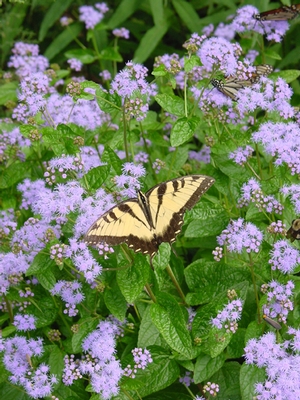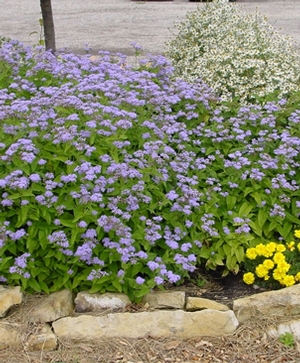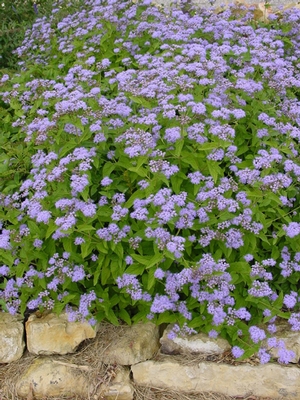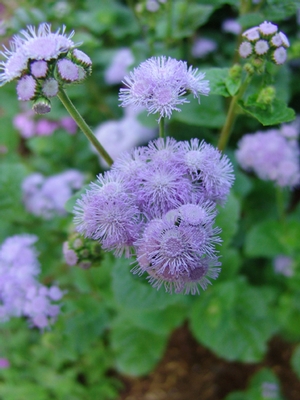Eupatorium coelestinum
Common: hardy ageratum, blue mistflowerEupatorium coelestinum LP50 - 50 per flat
- Height: 2'-3'
- Spread: 2'
- Spacing: 12"-18"
- Hardiness Zone(s): 6-11


Eupatorium coelestinum LP50 - 50 per flat



Moist soil in sun to partial shade. Found in moist woods, thickets, and along stream banks. For propagation, seeds will germinate readily but clump division in the spring is the usual method.
Eupatorium coelestinum, or hardy ageratum, is a cheerful perennial that loves moist, full-sun situations. It grows 2’-3’ tall and is covered in fuzzy blue flowers from September to October. Great for late season interest in the garden, this plant has bright green foliage contrasting with red stems. A rhizomatous species that naturalizes readily, hardy ageratum can be aggressive in Southern gardens. The genus Eupatorium was split into three genera recently and hardy ageratum is now Conoclinium coelestinum, however, many in the trade still call it by Eupatorium.
Eupatorium coelestinum is an eastern American native forb found in moist woods, thickets, and along stream banks. Highly adaptable to a wide range of soil and light conditions, including shade, high pH, and clay soils, hardy ageratum is best suited for applications where it can generously grow and spread its roots.
A late addition to one of the rain gardens on the property, Eupatorium coelestinum carpets the silt soil with beautiful blooms when other plants are wrapping up. We love how it handles soggy roots in the winter and provides nectar to swallowtails and other pollinators. It receives its common name for its similar appearance to the annual flower, ageratum, but this one grows taller, looser, and comes back year after year.